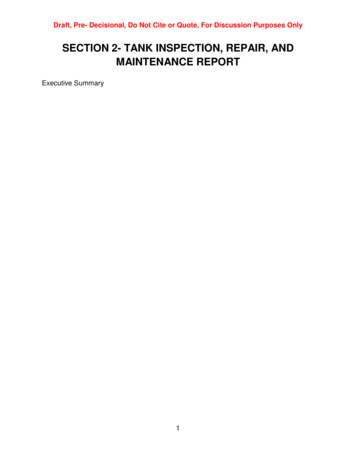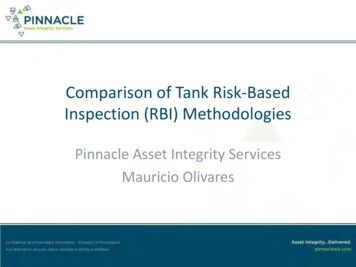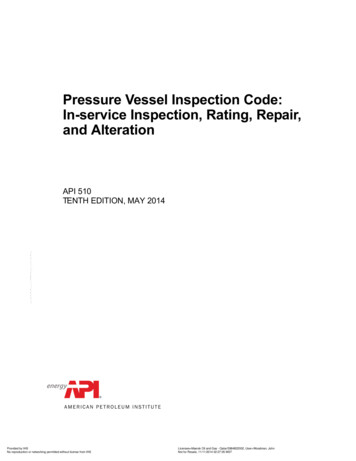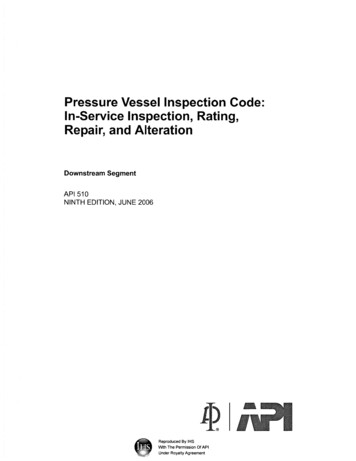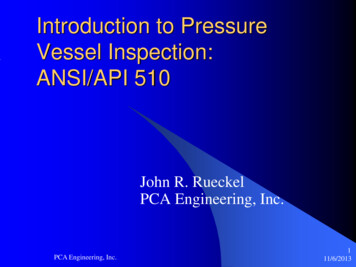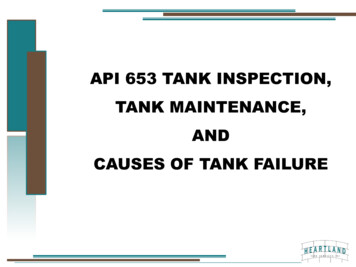
Transcription
API 653 TANK INSPECTION,TANK MAINTENANCE,ANDCAUSES OF TANK FAILURE
API 653 Tank InspectionsWhy Inspect Your Tanks? Prevent leaks into your secondary containment or togroundwater (if you do not have a secondary containmentsystem) Establish a baseline of tank condition and corrosion rates Identify problems to perform repairs before you have asignificant leak or release - Maintain your capital asset Minimize chance of catastrophic tank failure
PROPER INSPECTION PROTOCOLINSPECTOR CREDENTIALS Certified API 653 Inspector Four years minimum experience with storage tanks Must pass test conducted by American Petroleum Institute (API) Inspectors receive an individual inspector number Inspector testing required every three years
PROPER INSPECTION PROTOCOL Visual inspection of welds, plates, and appurtenances UT (Ultra-sonic Thickness) testing of shell courses, floor, and roof Vacuum testing of all floor weld seams – unless epoxy coated Identify bottom side corrosion on floors Settlement Survey Checking for planar tilt Check for floor bulges or depressions Provide calculations for safe or maximum fill height
Weld deteriorationPlate corrosion
Interior piping corrosionShell corrosion
Weld deterioration andfour-way junction – NON APIFour-corner insert withreinforcing backup – NON API
Evidence of interior shell corrosionFoundation evaluation
Floor plate corrosionLap-welded seam leak
Floor coupon with bottomside corrosionFloor top side corrosion
Severe roof corrosionStar light . . . Star bright!
TANK INSPECTIONS ARE NOT ALWAYS A BAD THINGTHIS IS A HAPPY TANK
TANK MAINTENANCE – COMMON SENSE APPROACH Conduct monthly/weekly walk-around of your tank(s) Look for stains on steel where leak may be occurring Check valve function and nozzle welds Check associated piping Check foundation for wash-out/deterioration Keep good records of product in and out
TANK MAINTENANCE – COMMON SENSE APPROACH Open up your tank a minimum of every two years and conduct yourown visual inspection inside Check for weld deterioration and corrosion If tank is coated, visually check coating for blisters or cracks Keep a record of inspections and results If tank has an internal containment liner, check leak monitor weekly Conduct an API-653 inspection of your tank every five years asrecommended by TFI (The Fertilizer Institute)
WHAT IS THE API 650 SPECIFICATIONAPI - AMERICAN PETROLEUM INSTITUTEWorldwide Standard for Above Ground Storage Tank Design andConstruction Provides requirements for calculations of shell plate thickness,man-way and nozzle design Provides procedures for shell, roof and floor construction Specifies material requirements and minimum thicknessrequirements Specifies weld construction requirements, weld spacing, andx-ray requirements
CAUSES OFCATASTROPHICTANK FAILURE
TANK FAILURES – COMMON CAUSES Tank shell plates not thick enough for specific gravity of productstored Over-filling of tank – over pressure Cut-down and re-erected tanks using improper cutting andre-welding procedures Improper weld procedures Lack of full weld penetrations (lack of weld fusion) Improper weld seam spacing Lack of radiograph (x-ray) of newly constructed tanks or onrepaired tanks
TANK FAILURES – COMMON CAUSES Lack of weld fusion - #1 common cause Welders not certified and tested to weld procedure Weld deterioration/corrosion – especially in lower horizontal andvertical weld seams Brittle fracture of steel Lack of proper certified inspections Tank erectors who know little about API Specifications andprocedures – these companies attract customers with a “cheap”price. Make certain your contractor can verify that your tankmeets API Specifications. DO YOUR OWN HOMEWORK
Cut-down and re-welded tankImproper weld spacing
Double wall 500,000 gallontank, Illinois 2008Cause – overfilling and lack offusion on weld seams
Yards of destruction
Original tank foundation
Weld seam rupture. Force of rupture “pushesback”. Rupture on side of camera location.
earthquake video
Conduct an API-653 inspection of your tank every five years as recommended by TFI (The Fertilizer Institute) WHAT IS THE API 650 SPECIFICATION API - AMERICAN PETROLEUM INSTITUTE Worldwide Standard for Above Ground Storage Tank Design and Construction Provides requirements for calculations of shell plate thickness, man-way and nozzle design Provides procedures for shell, roof
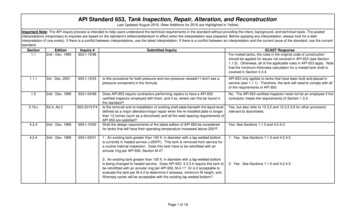
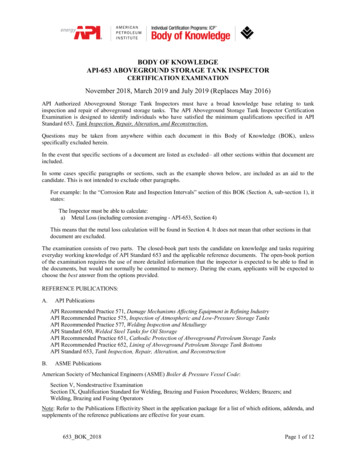
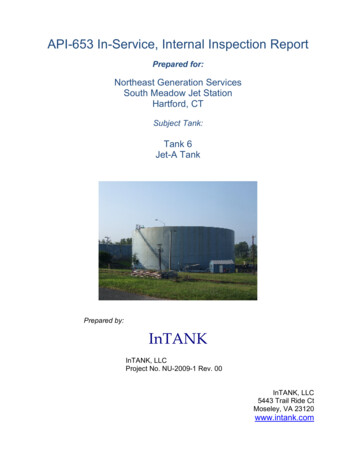
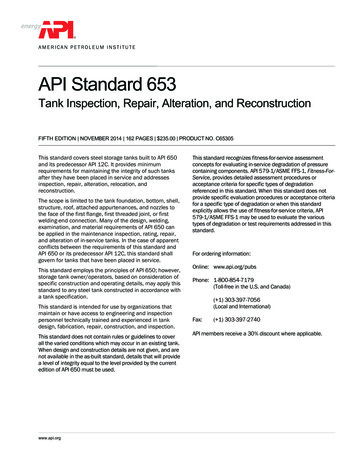
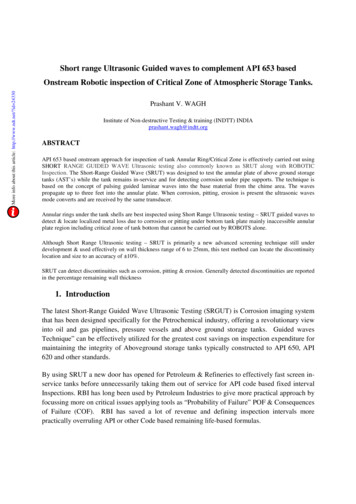
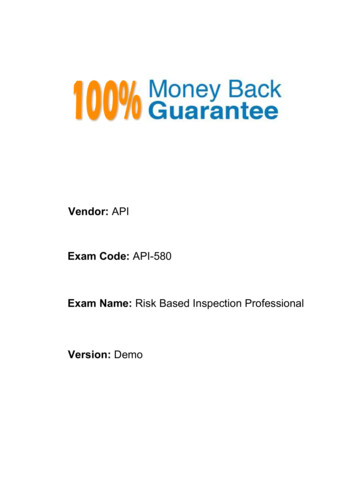
![API Ballot: [Ballot ID] – API 510 & API 570, Deferrals, Rev05](/img/5/api510andapi570deferralsrev5.jpg)
